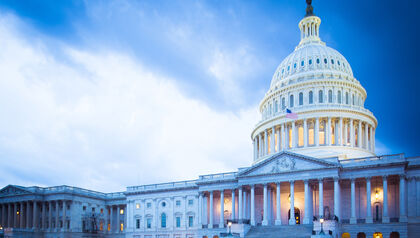Moving global supply chains back to the United States has become a bipartisan focus in the U.S. presidential race. Both former President Donald Trump and Vice President Kamala Harris favor more domestic-oriented policies. Their respective platforms hold the potential to greatly impact global trade and industrial manufacturing.
When compared to the era of increased globalization seen in the 1990s and 2000s, the recent focus on U.S. protectionism is a big shift, one that is expected to remain in the political arena irrespective of a victory by Trump or Harris. Trade protectionism is the practice of restricting imports from other countries and implementing policies that limit global trade with the intention of helping domestic industries.
While the underlying intention remains the same, each candidate has a unique approach to international trade policy and the effort to bring more manufacturing jobs back to the U.S. Trump believes that tariffs are part of a tougher negotiating position, which give the United States more leverage in negotiating better trade agreements. To support his position, he points to the United States-Mexico-Canada Agreement (USMCA), which replaced North American Free Trade Agreement (NAFTA), and the Phase One China deal from his first administration as successful examples.
For the past four years, the Biden-Harris administration upheld the Trump-era tariffs and confirmed an overall shift toward protectionism. While Harris has criticized tariffs as an excessive “sales tax” on Americans, she also supports bringing manufacturing back to the U.S. and strengthening local supply chains.
| Topic | Trump Plan | Harris Plan | Biden-Harris Plan |
| Tariffs |
|
|
|
| Corporate Tax Rate |
|
|
|
| International Tax |
|
|
|
| Trade Initiatives |
|
|
|
| World Trade Organization (WTO) |
|
|
|
Potential Decline in Global Trade and Growth
Neither Trump nor Harris have put forth economic trade policies that should be viewed through a pro-growth lens. Instead, the objectives of both plans can be viewed as promoting growth with significant efforts to re-balance economic disparities caused by globalization.
Regardless of which presidential candidate is elected, challenges in the global geopolitical environment will continue for several years. We are likely to see continued tensions with various countries as policymakers globally focus more on national security directives at the sacrifice of global economic efficiencies.
Trump Aims for Lower Taxes, Higher Tariffs
Taxes Under Trump
The Tax Cuts and Jobs Act (TCJA) of 2017 was Trump’s signature piece of economic legislation passed in his first term. Several provisions of the TCJA are set to expire at the end of 2025. Taxes will be at the top of Trump’s economic policy agenda, should he win the election.
For personal income taxes, this would imply an extension of current tax rates for all taxpayers. This translates into an effective personal income tax rate across taxpayers of less than 10%.
In addition, Trump and his advisors have discussed reducing the statutory corporate tax rate from its current 21% to 15%, reducing the effective corporate tax rate to approximately 7% of profits.
Tariffs Under Trump
The China trade war was a key element of Trump’s first term. We expect him to restrict trade in his second term, including a 10% tariff on nearly all imported goods and 60% tariffs on Chinese imports. Together, this would push the effective tariff rate up from 3% to a historically high 19%.
The tariff increases Trump imposed in his first term were limited. At their peak in 2019, they impacted about 10% of U.S. imports and were limited to specific products, mostly coming from China. Nonetheless, they caused measurable economic damage, particularly to the agriculture, manufacturing and transportation industries.
A tariff increase covering nearly all imported goods, as Trump recently proposed, goes far beyond these previous actions. Goods imports account for more than 10% of U.S. consumer spending. His proposed tariff policy will raise costs for businesses. Increased tariffs would also weigh on growth and productivity, lifting inflation as businesses pass much of their higher costs to consumers.
Many people widely believe that higher tariffs would not help to significantly reduce the U.S. trade deficit. Demand for imports decreases because of higher tariffs. However, a stronger dollar and slower global growth will hurt exports, which roughly balances out the effect on the trade balance.
U.S. exports would also suffer due to tariff retaliation by many other countries. The countries that raise tariffs on U.S. goods do so based on many factors, including economic, political and geopolitical reasons.
Given the continued fragility of global supply chains, higher tariffs run the additional risk of disrupting trade flows. Uncertainty over further possible policy changes is likely to deter investment. Deliveries could also be disrupted as producers divert shipments to markets with lower tariffs and businesses try to source from domestic suppliers.
Harris Aims for Higher Corporate Tax Rates With Little Change to Tariffs
Taxes Under Harris
Harris’s corporate tax reforms include well-established proposals and a few new proposals that carry more uncertainty. Key to her corporate tax agenda is an increase in the statutory rate from 21% to 28%. Her proposed corporate tax rate is much lower than the 35% rate that existed before the TCJA. However, it would still rank the U.S. among the top ten countries in the Organisation for Economic Co-operation and Development (OECD) with the highest corporate tax rates.
Harris’s proposed changes would raise the tax rate on the foreign earnings of U.S. multinationals from 10.5% to 21%, and the Inflation Reduction Act’s (IRA) 1% excise tax on stock repurchases to 4%.
Moreover, she has proposed expanded limitations on deductions for compensation. Specifically, the budget would deny deductions for all compensation above $1 million paid to employees of C corporations. Finally, it would also close the loophole for fund managers that allows them to treat carried interest like investment income for tax purposes.
Harris also proposes to increase other corporate taxes, including raising the new 15% alternative minimum tax rate on corporations earning $1 billion or more per year to 21%. This is a tax on book income, or the income firms report on financial statements to shareholders and that reflects a company’s true financial performance.
The IRA’s alternative minimum tax has not succeeded in raising government revenues thus far. The IRS delayed the implementation, originally scheduled for 2023, because of various unresolved complexities.
The budget also adopts the undertaxed profits rule, which would mimic the OECD’s global minimum tax rules. This gives the U.S. the power to impose extra taxes on companies that are part of multinational corporations. This applies if companies pay less than the 15% global minimum tax rate in another country.
If Harris’s plans are put into action, they would create the highest corporate tax rate since before the financial crisis. Overall, Harris’s tax reforms would likely raise the most revenue as a percent of gross domestic product (GDP) since the 1950s. However, this may come at the cost of private sector growth.
Tariffs Under Harris
While Harris hasn’t released many specific details on her trade policy, she has been vocal in her dislike of Trump’s plan to further increase tariffs.
Harris may keep some policies from the Biden-Harris administration. This includes maintaining the $360 billion in tariffs on goods from China, as well as expanding tariffs on steel and aluminum from certain imports from Mexico.
In 2025, whether Trump or Harris is in power, global businesses are assessing risks and looking at different possible outcomes. This helps them protect their supply chains and keep their operations running smoothly.
Your Guide Forward
Regardless of the election outcome, both trade plans put forth by Trump and Harris could have far-reaching implications for global trade and domestic companies. It will be important for businesses to closely monitor these proposals and prepare for the potential impact on their operations and bottom line.
Cherry Bekaert’s international tax professionals are equipped to help you navigate the fluctuations and shifts of a complex tax environment. With experience across a variety of industries, including industrial manufacturing, we can assist with:
- Proactive tax planning
- Cross-border tax consulting
- Cross-border financing structures
- International tax compliance
- Transfer pricing
- International tax dispute resolution
- International tax regulatory requirements
- Legislative development
Disclaimer:
This content focuses on the candidates’ tax proposal plans and is intended to provide general information about the potential tax legislation that may be implemented by the future government. The information provided in this content piece is not intended to serve as legal or tax advice and should not be relied upon as such. The prospective potential legislation mentioned in this content piece is subject to change, and there is no guarantee that any proposed legislation will be enacted into law. Any action taken based on the information provided in this content piece is at their own risk, and Cherry Bekaert shall not be held liable for any such action taken.
Related Insights:
- Pre-Election Analysis: Tax Policy and the Upcoming House and Senate Elections
- Trump vs. Harris: What Their Current Tax Proposals May Mean for Your Business
- The Trump-Era Tax Cuts Expiring in 2025
- Unlocking Election Year Insights: The Inflation Reduction Act’s Impact
- The Election’s Potential Impact on Industrial Manufacturing and Sustainability
- The Child Tax Credit: A Key Issue for Trump and Harris
- Federal Estate and Gift Tax Exemption Will Sunset After 2025





